This month, Canada recorded its largest population increase in history, with 1.27 million residents added in 2023. Net overseas migration accounted for 98% of the expansion.
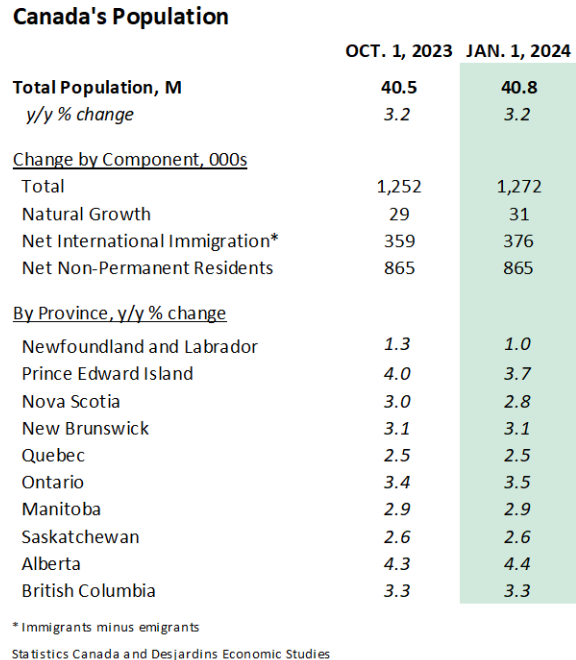
Canada’s population expansion has easily exceeded Statistics Canada’s “high growth” forecasts:
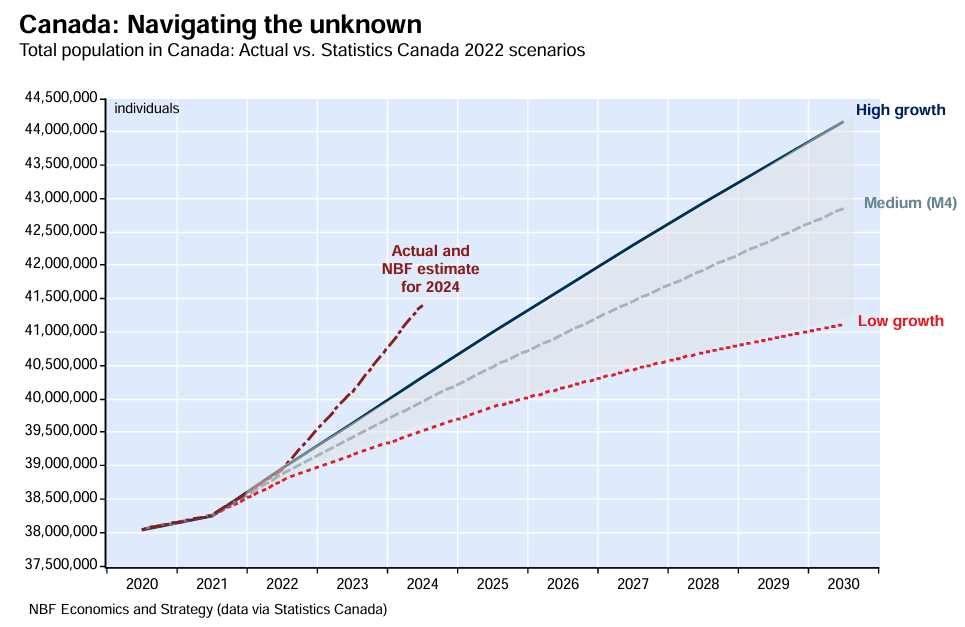
This surge in population growth has driven a record housing supply deficit, according to a new analysis from the National Bank of Canada:

The economists note that Canada’s working-age population grew by 300,000 during the most recent quarter (at an annualised rate of 3.7%), compared to housing starts of only 61,000 in the first quarter of 2024.
“This means there is currently only one housing start for every 4.9 people entering the working-age population, compared to a historical ratio of 1.8”.
“There is no historical precedent for a housing supply deficit of this magnitude”.
“Canadian households should not expect any significant relief from housing cost inflation”, the economists warn.
The massive surge in population demand has also sent rental vacancy rates to all-time lows and rental inflation to the moon:

In desperation, the Trudeau Canadian Government has launched a pie-in-the-sky plan to build 3.87 million new homes by 2031.
This target would require an average annual run rate of 550,000 housing starts per year, about double the record high of 270,000 units in 2021.

The National Bank of Canada argues that meeting such a target will “ be a VERY tall order, because we already have almost 8% of the workforce employed in construction, more than at any time since 1946″.
“We’re also going to need people to construct the other infrastructure that comes with almost 4 million housing units (roads, sewers, hospitals, schools, etc.)”.
“We’re not sure Ottawa has properly assessed the labour constraints of building a record number of homes by 2031”, the economists wrote last week.
Australia faces a similar dilemma with the Albanese Government’s mythical plan to build 1.2 million homes over the next five years.
This 240,000 annual run rate is higher than anything Australia has ever produced previously:

According to the OECD, Australia has one of the world’s greatest concentrations of construction workers.

As seen above, 5.2% of Australia’s population works in construction, according to the OECD (based on the most recent surveyed observation), compared to 3.3% across the OECD.
Furthermore, ABS employment figures show that 9.2% of Australian workers were employed in construction in February 2024, a historic high.
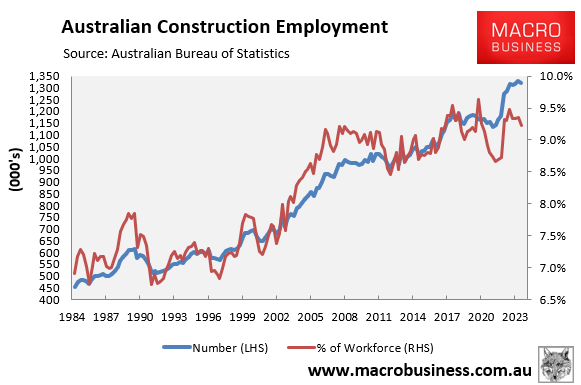
People build homes, and to build more homes, Australia will need more construction workers—not only to build the homes themselves but also the infrastructure that goes with them.
Which industry should Australia recruit personnel from to boost construction employment? And won’t that create labour shortages in those areas?
Let us not forget that home builders compete for employment with state government ‘Big Build’ infrastructure projects, exacerbating the supply problem.
We should also recognise that construction costs have risen by 30% to 40% since the pandemic, reducing supply:
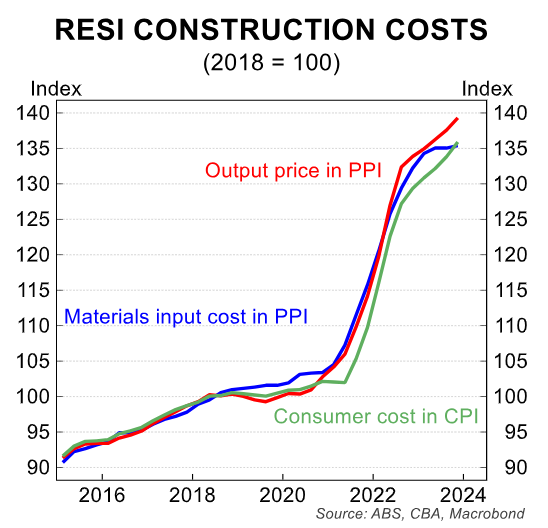
Then there are Australia’s globally high interest rates, which are reducing the demand for and supply of new homes.
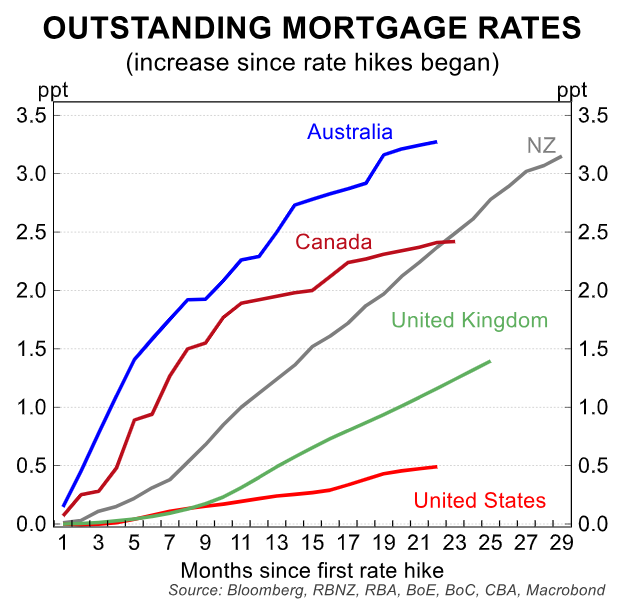
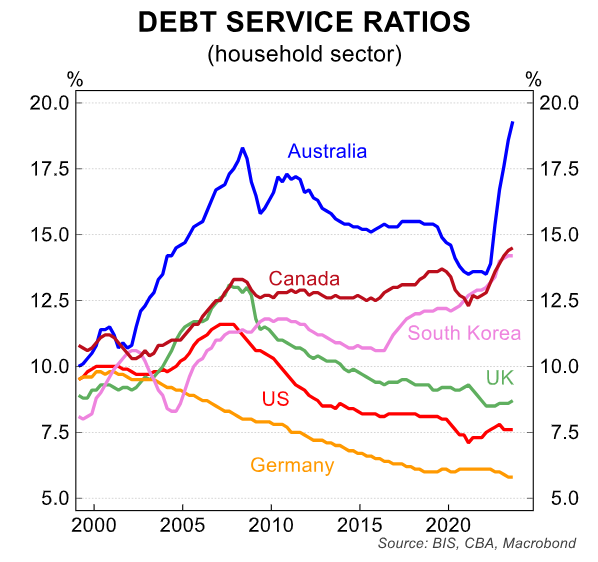
Neither Australia nor Canada will ever build enough homes to meet their rapidly growing populations.
The solution for both nations is to dramatically slow net overseas migration to a level below their capacity to build homes and infrastructure.

